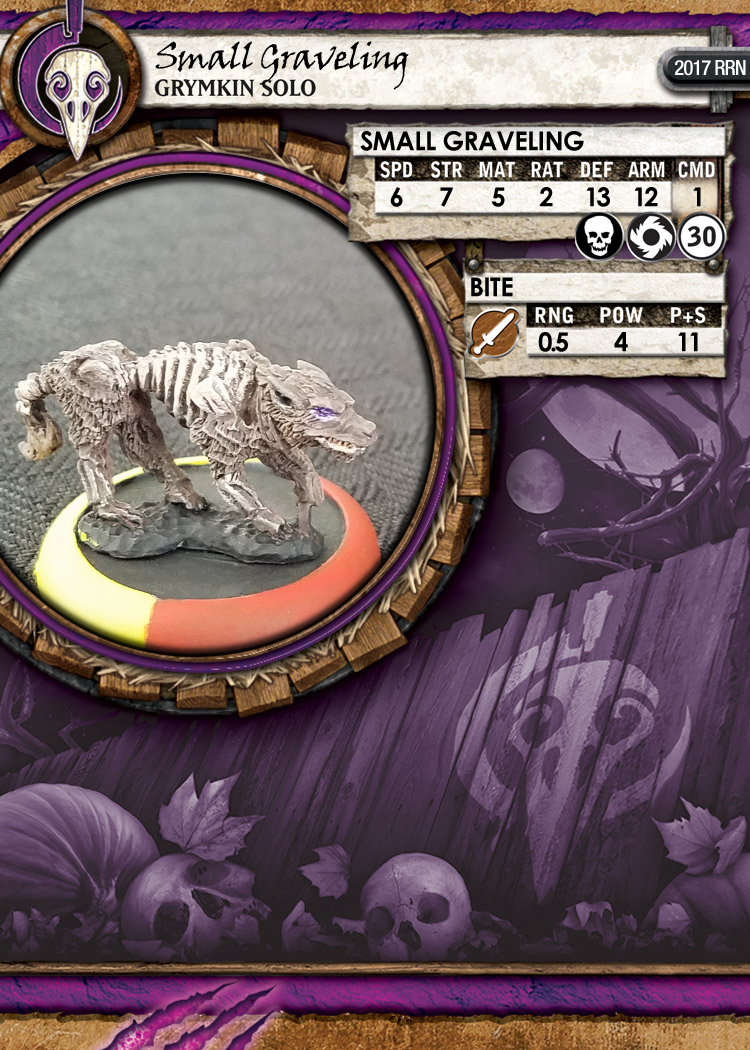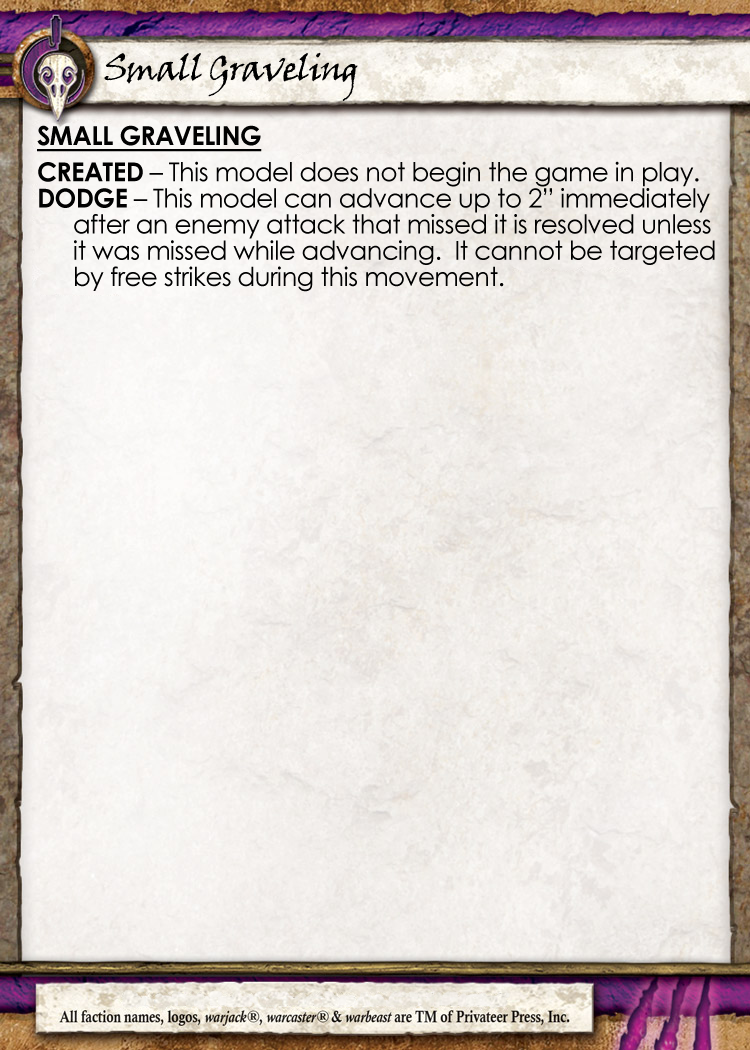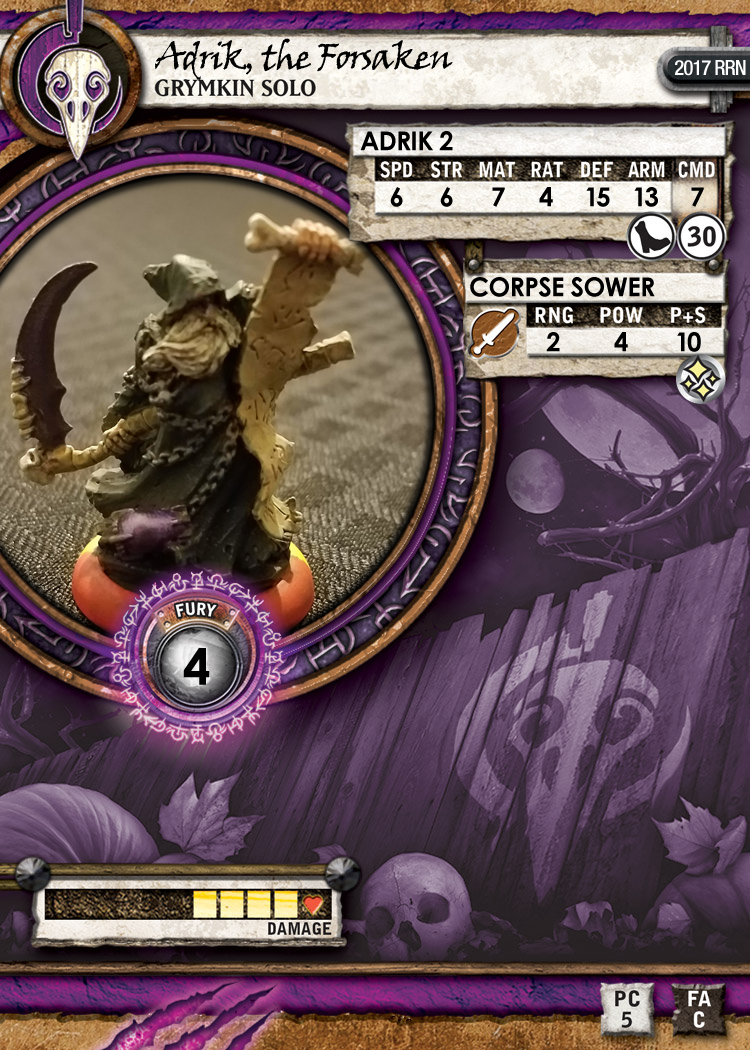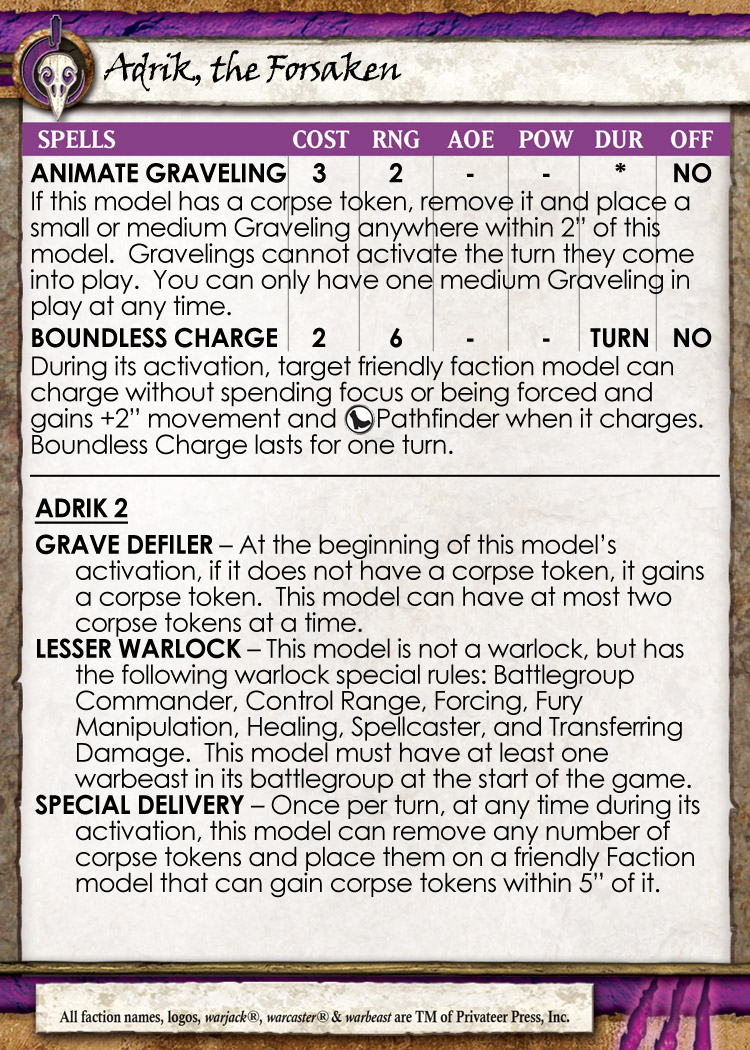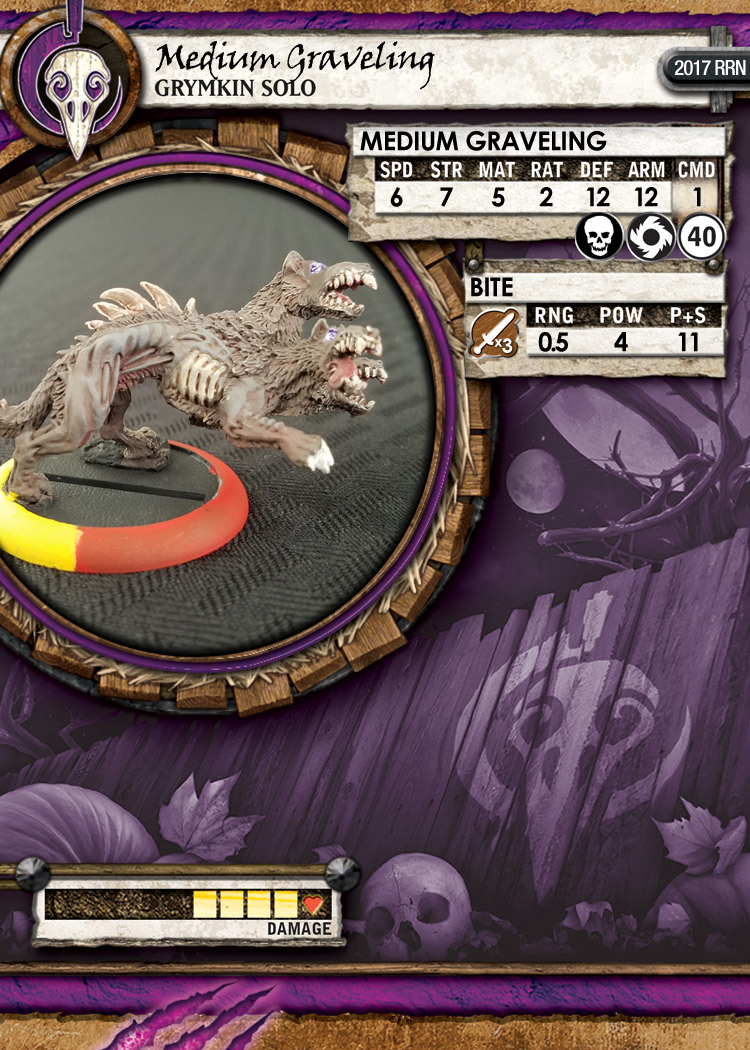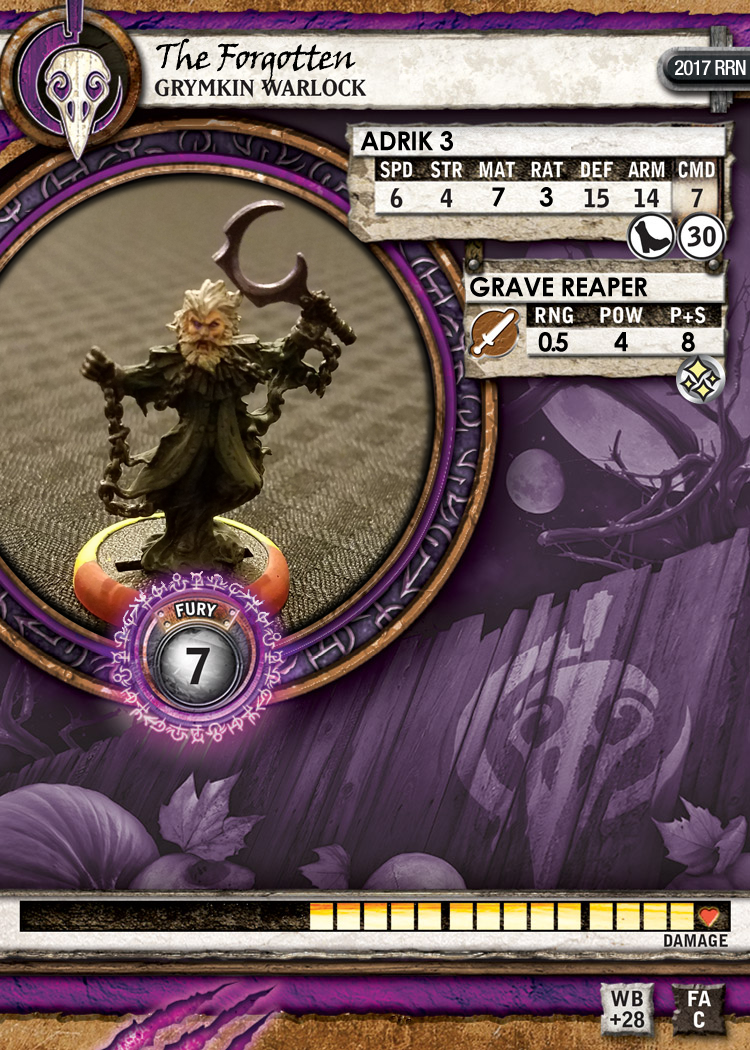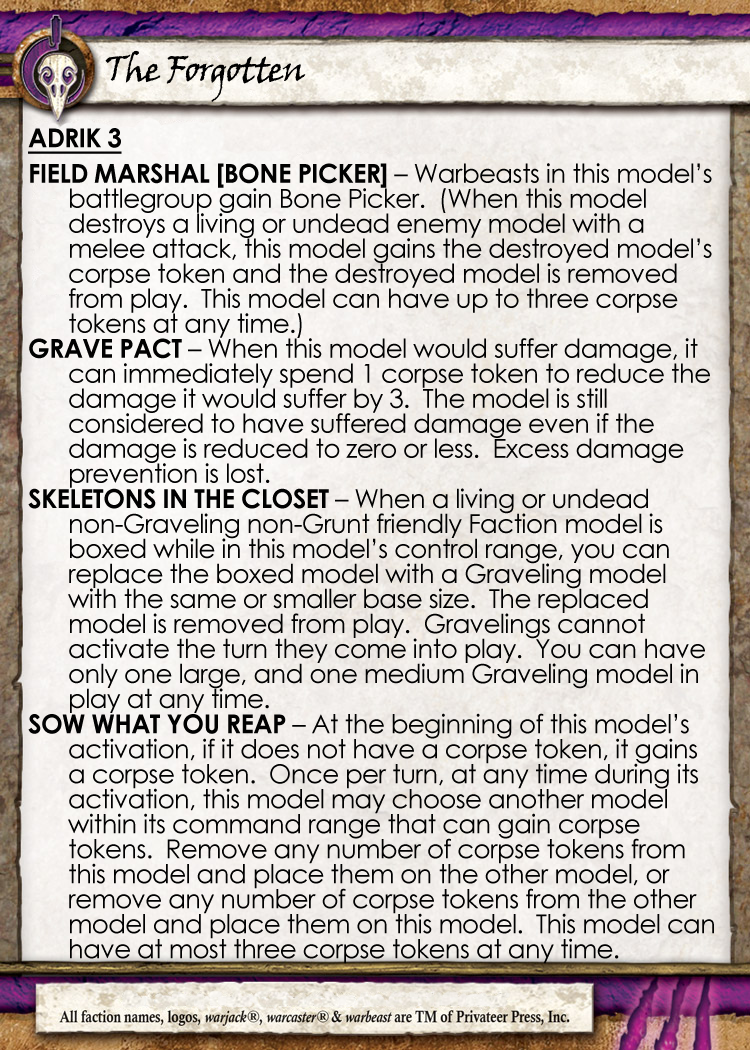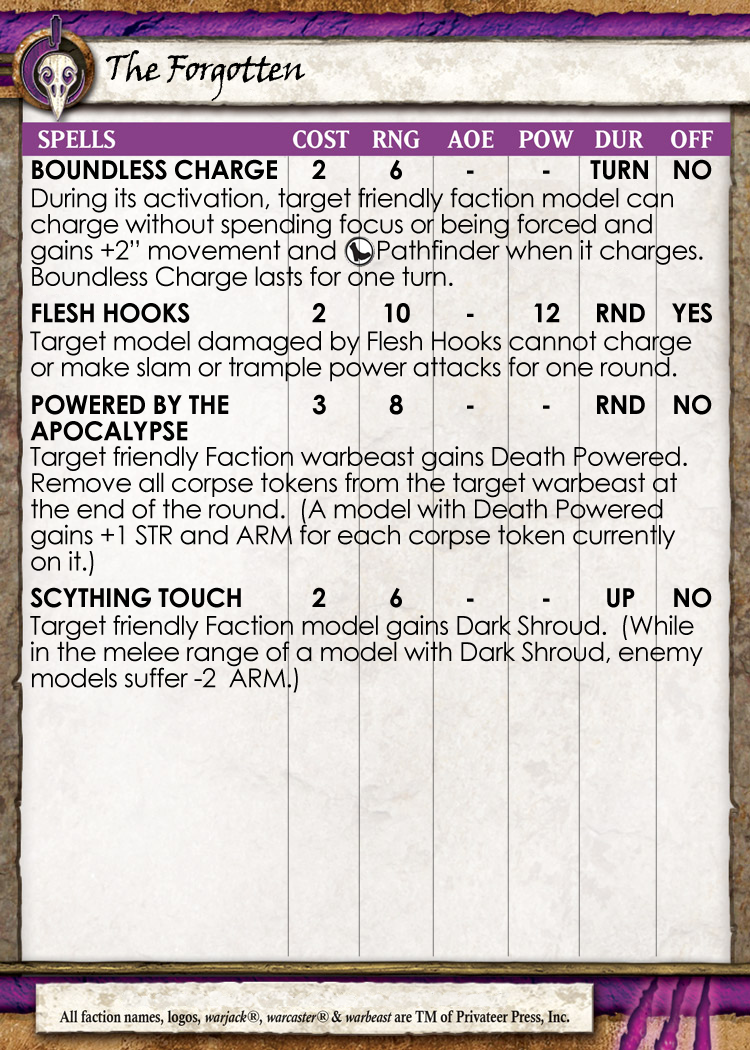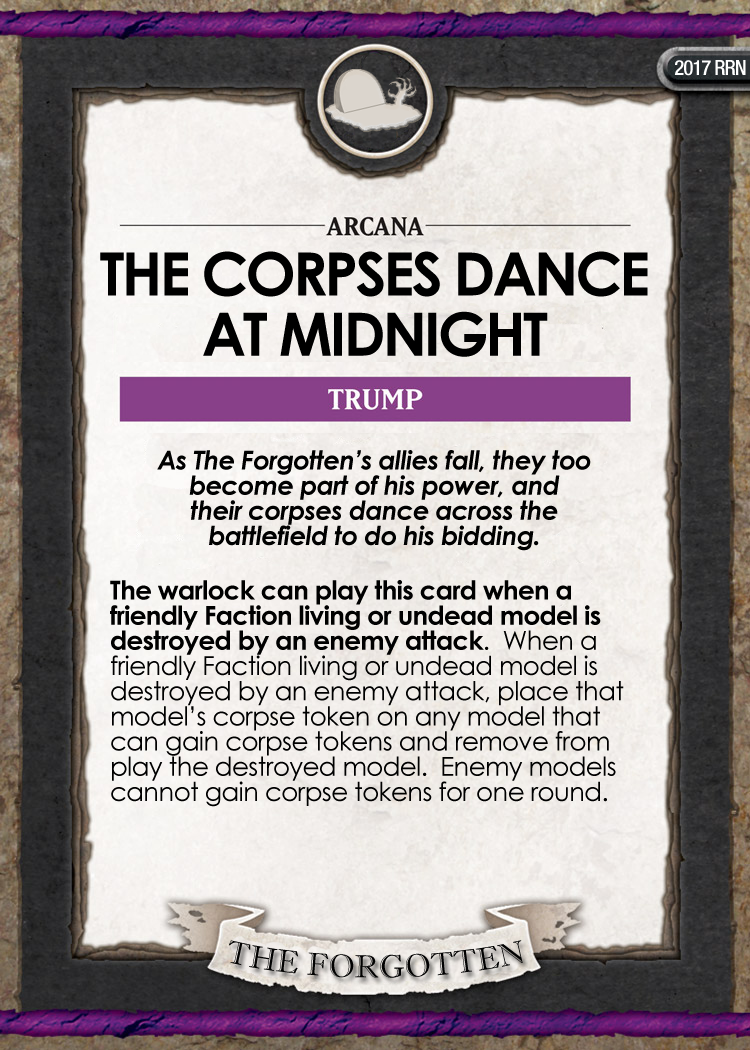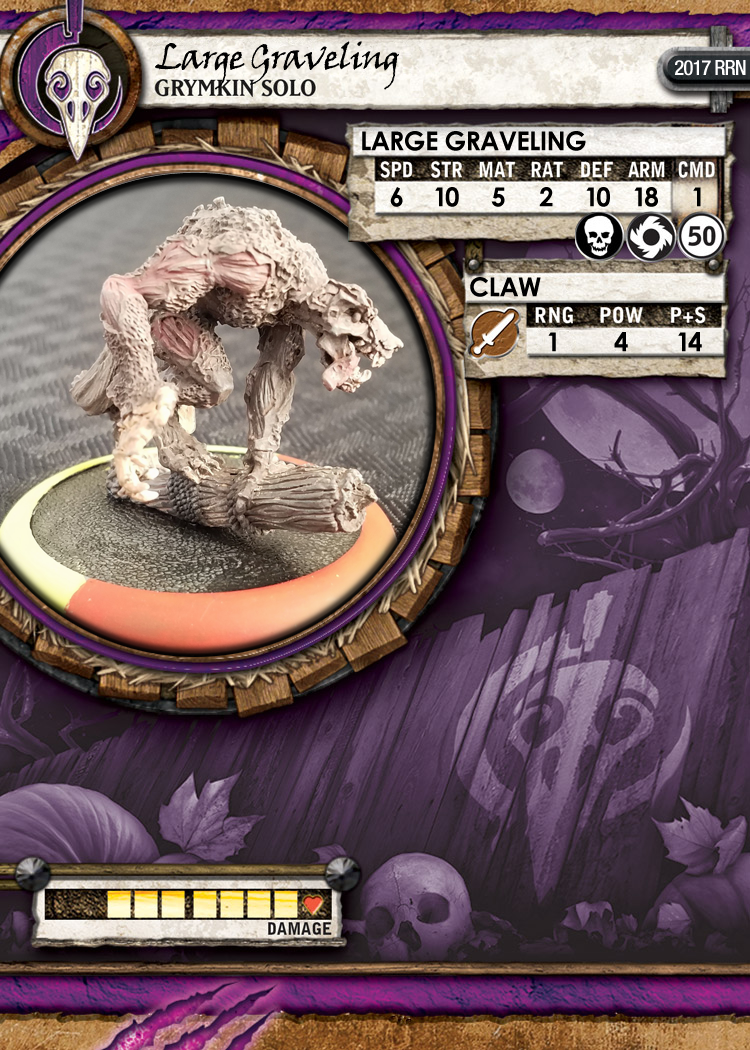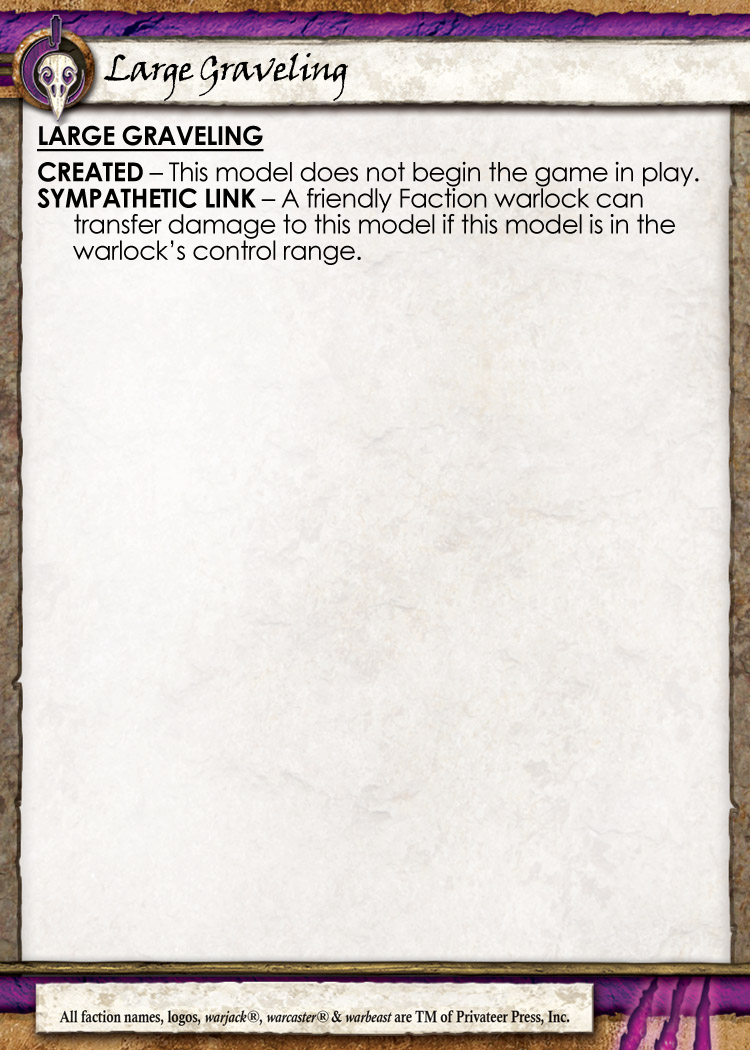This year’s narrative league was intended to be one part narrative and one part game design. The narrative part was about writing stories about the characters as they made their journey of discovery and rose to power within their respective factions (you may have read a few here on my blog over the last few months). The game design part was built with the idea of engaging everyone in the group to design a character from a mere solo, through journeyman, and finally as a full warcaster or warlock.
Below, I will show the final rules for each of my characters, and discuss a bit about the game design for them.
Adrik, the Abandoned was my solo (used in the first four weeks of the league). I based him off of the Circle Orboros Blackclad Wayfarer’s stat line, then played around with his abilities and spells a bit. My main goal was to have a model that provided a bit of corpse control – I wanted the ability to bring just a few corpses on to the field, especially in smaller games against Warmachine opponents. The idea of a necromancer that could either dig up corpses and provide them to models in my army or create little undead creatures to serve him seemed a neat idea, so that’s what I ran with.
Overall, I was pretty happy with Adrik, the Abandoned as he mostly achieved what I was hoping for. His ability set was good enough to make each option viable depending on the game (I did end up using each of his different abilities at various points during the league). Conversely, I didn’t find that his power set adversely unbalanced the game – it’s likely that he was a bit powerful for a five point model, but it fit reasonably into the league (as everyone had a character that was a bit powerful for five points).
Next was Adrik, the Forsaken, he was my lesser warlock used in the second four weeks of the league. His rules are almost completely derivative from his first incarnation – I dropped magical ability and converted two of the three effects to spells, then “upgraded” the corpse abilities just a bit to see how they went. In general, I felt like his ability to bring an additional warbeast to the field was far more felt than anything else (mostly because I like running warbeast heavy lists). At first, I was running his medium graveling a bit too similarly to the small graveling and it neither felt distinct nor useful. I didn’t get to the final rules for that model until the last month of the league, so that may help some to make this version more interesting.
Generally, I feel like Adrik, the Forsaken is a decent warbeast utility piece, but he works well with Grymkin in that they don’t have a lot in this department (unless you’re running Dark Menagerie). That being said, I don’t really see Grymkin as a warbeast focused faction, so it’s hard to say for sure.
Finally, The Forgotten was the final iteration of Adrik, and he was my warlock model used in the last month of the league. He was primarily based on The Dreamer (as she has her phantasms, he has his gravelings), where I doubled-down on the necromancer feel by giving him a fair bit of corpse control. He ended up being a bit more corpse dependent than I would have really liked though – especially against ‘jack-heavy Warmachine armies and when I am running beast-heavy, he really struggles to get much done at all.
I think I was most unhappy with The Forgotten’s over-dependence on corpses and how his gravelings come into play, so these things will probably get the most tuning now that the league is over. Even under Dark Menagerie, I felt like it was a bit too difficult to get stuff done, which indicated that his abilities were a bit too limiting. Also, his gravelings really only acted as speedbumps as my opponent was always able to kill them the same turn they came into play (i.e. I never got to activate them).
At the end of the day, for the league as a whole, I have to say that I enjoyed getting the chance to play a character that I designed, but I also really enjoyed designing my character. Researching the breadth of Warmachine and Hordes rules, look for similarities, and get a deeper understanding of how and why certain things are put together was really rewarding. Then, getting the chance to engage with those mechanics, playtest a model on the table, and really see what they had to offer was a ton of fun.



